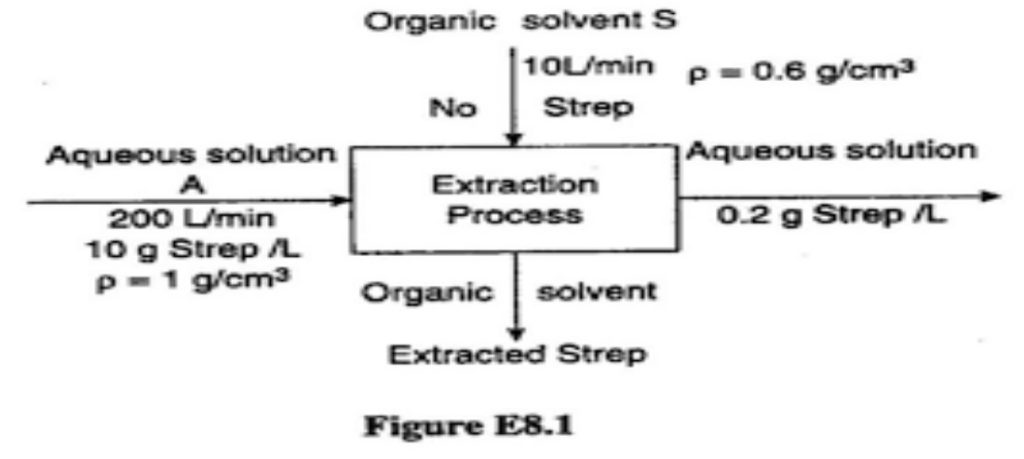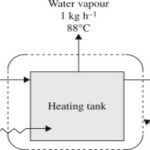The following steps are helpful in solving problems that combine material and energy balance calculations.
1). Since material balances have to be obeyed even if an energy balance is to be performed, the first thing to do is to solve the material balance part of the problem (i.e. choose a basis, make a flowchart, identify your unknows, perform a degrees of freedom analysis, write equations, solve).
2). If an energy balance calculation is required in addition, there will be an extra unknown in the problem. This unknown may be a temperature, amount of heat added, or some other variable that appears in the energy balance. The extra equation you’ll use to solve for this additional variable is the energy balance. To begin, identify the “system” and write the appropriate form of the energy balance for it (i.e. closed, open, isolated). Also, delete any terms from the energy balance that are either zero or negligible compared to the other terms. For example, if steady state applies then the dt dU dt dE dt dEk P + + terms can be set to zero. If no shaft work is taking place, then Ws = 0. Other simplifications may apply based on the given information.
3). For each species that you need Hˆ or Uˆ for, you will need to choose a reference state. If using data from an external source (i.e. tables, graphs) the reference state will be specified in that source. If you will be calculating the internal energies or enthalpies yourself (methods for doing this will be discussed in Chapters 8 and 9), then you will need to decide what reference state to use. Often, it is convenient to choose one of the inlet or outlet conditions as the reference state, as then the Hˆ or Uˆ for that stream become zero, thus simplifying the calculations.
4). Make a list of all the terms in the energy balance that you will need to calculate or look up in order to solve for the unknown of interest. This list may include internal energies, enthalpies, elevations, mass flowrates (mass flowrates were presumably already calculated in step 1), etc.
5). Calculate all the quantities identified in step 4.
6). Solve the energy balance for the remaining unknown of interest. To do so, you will need to insert the values of all the other terms appearing in the energy balance, as identified and calculated in steps 4 and 5.


